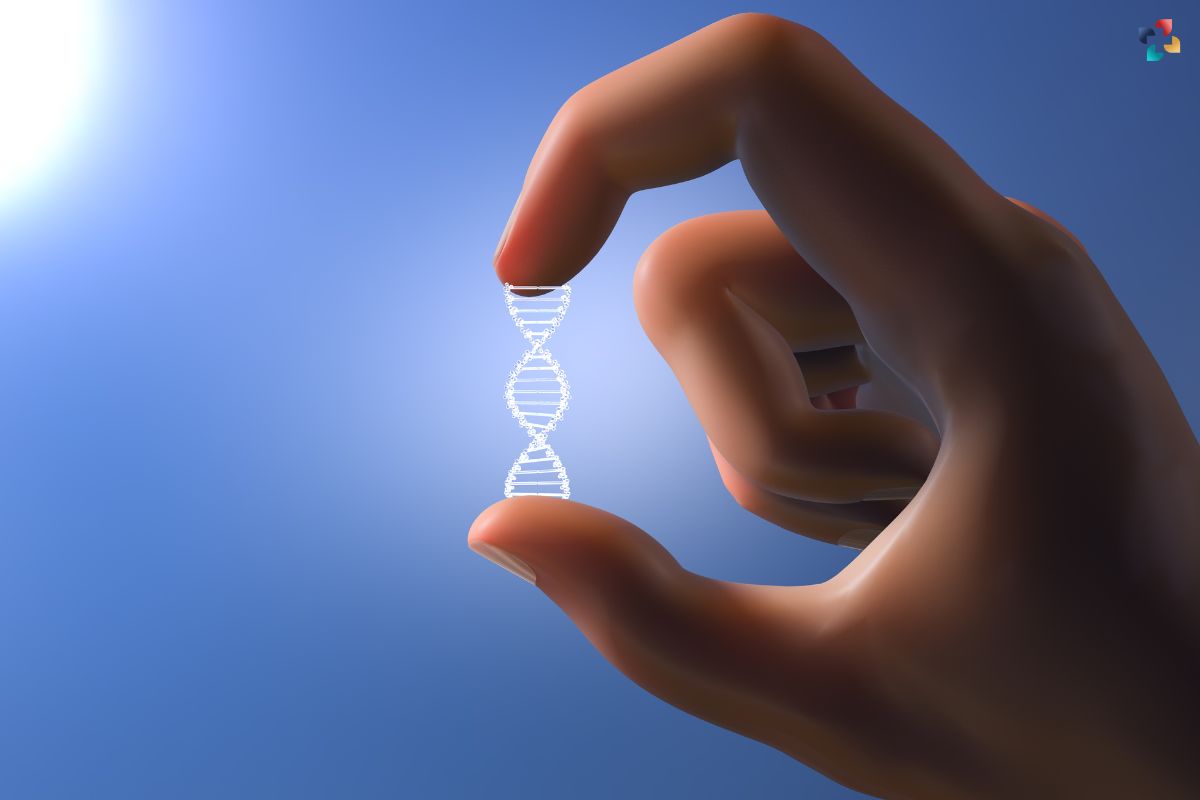Imagine a blueprint so intricate, so vital, that its precise copying ensures the very continuation of life. This blueprint, the double helix of DNA, holds the code for building and maintaining every living organism on Earth. But how does this code get copied with such astonishing accuracy, generation after generation? The answer lies in a breathtakingly orchestrated process called DNA replication.
What is DNA Replication?
Imagine holding the most detailed blueprint ever conceived, intricately woven with the secrets of life itself. This blueprint, the double helix of DNA, encodes every aspect of your being, from the color of your eyes to the rhythm of your heart. Now, picture meticulously replicating this blueprint with such flawless precision that even the tiniest detail remains perfectly matched. This intricate feat, occurring countless times within your very cells, is DNA replication.
But why is this seemingly routine process so vital? The answer lies in the very essence of life: growth and division. Cells, the workhorses of our bodies, can only divide to create new cells if they first duplicate their DNA blueprint. This ensures each daughter cell receives a complete set of instructions, allowing them to function independently and carry on the torch of life.
And the accuracy of this copying process is breathtaking. Errors, even the slightest mismatched nucleotide, can disrupt delicate cellular processes and potentially lead to devastating consequences. To counter this threat, DNA replication employs an astonishing symphony of enzymes and proteins, each playing a crucial role in ensuring fidelity. Proofreading mechanisms meticulously scan the newly synthesized strands, meticulously correcting any slip-ups before the daughters embark on their own journeys.
DNA replication isn’t confined to mere cell division. It’s the cornerstone of development, enabling cells to specialize and take on diverse roles in building a complex organism. It’s the bridge between generations, carrying the torch of our genetic heritage from parent to child. And, more importantly, it’s the foundation of repair, patching up DNA damage caused by environmental assaults or internal wear and tear.
Understanding DNA replication isn’t just about appreciating a fascinating biological process; it’s about unlocking the secrets of life itself. This knowledge holds immense potential, from developing therapies for genetic diseases to engineering crops resilient to environmental challenges. The deeper we delve into this molecular ballet, the more we unveil the awe-inspiring power of life and pave the way for a future shaped by the wisdom encoded within our very DNA.
The 5 Steps of DNA Replication: A Molecular Ballet

Dive into the dazzling bioluminescent world of DNA replication! Imagine strands of life’s blueprint unfurling like silken curtains, ready for a meticulous copy under the spotlight of enzymes. Witness the DNA helicase maestro unwind the double helix, setting the stage for a captivating molecular ballet. Grab your metaphorical binoculars and prepare to be amazed by the precision, choreography, and sheer wonder of copying life’s code. This isn’t just science; it’s a backstage pass to the greatest show on Earth, hidden within every cell. Now, let’s waltz through the 5 steps of this breathtaking performance!
DNA replication isn’t a haphazard mess; it’s a precisely choreographed ballet of enzymes and proteins, each playing a crucial role. Let’s break down the five key steps of this molecular performance:
1. Initiation
The opening act begins with the DNA helicase, an enzyme that acts like a molecular zipper, unzipping the double helix, and separating the two strands of DNA. This creates a replication fork, the Y-shaped region where the copying will occur.
2. Priming
To initiate the copying process, short RNA primers are built by an enzyme called DNA primase. These primers act as temporary starting points for the DNA polymerase, the star of the show.
3. Elongation
Enter the DNA polymerase, the tireless copyist. This enzyme meticulously reads the template strand of DNA and assembles complementary nucleotides one by one, building the new daughter strand alongside the template. Imagine two construction crews simultaneously building identical houses, following the blueprint of one existing house.
4. Termination

As the polymerase reaches the end of the template strand, specific sequences signal the process to stop. Additional enzymes, like DNA ligase, join the newly synthesized fragments into continuous daughter strands.
5. Proofreading
To ensure fidelity, a final quality control step involves enzymes that proofread the newly synthesized DNA, correcting any errors that might have slipped through. Only then are the complete daughter molecules ready for cell division?
The 4 Functions of DNA Replication: Why Is It Important?
DNA replication plays a critical role in four fundamental aspects of life:
1. Cell Division
During cell division, the replicated DNA is distributed equally between the two daughter cells, ensuring each cell receives a complete set of genetic instructions. This enables the growth, repair, and replacement of dying cells.
2. Development and Differentiation
As an organism develops, different cells begin to specialize, taking on specific functions. This diversification occurs because these cells express different genes from their shared genetic blueprint. Accurate DNA replication allows for this controlled gene expression, shaping the intricate tapestry of development.
3. Inheritance
Through the faithful copying of DNA, genetic information is passed from parents to offspring. This transmission of traits across generations ensures the continuation of species and the potential for adaptation and evolution.
4. DNA Repair

Inevitably, DNA can be damaged by factors like radiation or reactive oxygen species. Replication plays a crucial role in repairing this damage, maintaining the integrity of the genetic code, and protecting against mutations that could lead to disease.
The Wonders Never Cease
DNA replication is a complex and elegant dance of molecules, a testament to the awe-inspiring ingenuity of life. Understanding this process not only deepens our appreciation for the intricate workings of biology but also holds immense potential for medical advancements. From developing therapies for genetic diseases to engineering more efficient crops, unlocking the secrets of DNA replication paves the way for a future brimming with possibilities.
This article has offered a glimpse into the fascinating world of DNA replication, but the intricacies of this process are far from being fully understood. As researchers delve deeper, we can expect to discover even more about this vital dance of life, revealing new wonders and inspiring further exploration into the magnificent tapestry of DNA.











